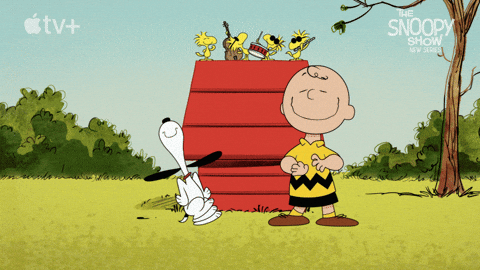When we bought our second home in Lawrenceville in 1989, our mortgage rate was 11.25 percent. When we bought our home in Tucker in 2007, we got an interest rate of 6 percent with a second mortgage of 8 percent.
Compared to what we had in Lawrenceville and our first home, also in Tucker (12 percent with a three-year buy-down, ending at 9 percent), we were practically doing Snoopy dances.
A year later we were upside-down on our mortgages.
Everyone urged us to refinance in 2008 and 2009. Banks had funds from the Troubled Asset Relief Program (TARP) of 2008 to help people with their mortgages. Since we were happy, we didn’t bother.
These were the lowest mortgage rates we’d ever paid. And refinancing comes with extra expenses, such as closing costs.
We bought our first home in Tucker and our second home in Lawrenceville during the high interest-rate period of the 1980s. My husband also bought his first car with his first loan, with an interest rate of over 18 percent.
Why were interest rates so high?
In the late 1970s and early 1980s, inflation spiraled out of control, reaching 14 percent, primarily because OPEC reduced the supply of oil. Then, our economy depended on oil from OPEC more than it does now. [1]
There was no such thing as remote work, for instance. Cell phones didn’t exist, and Zoom was 30 years away. And a bigger proportion of our goods were delivered to retail stores, which we had to drive to.
At the federal level, there were three ways to reduce inflation, the rate at which prices rise: Reduce government spending, increase taxes, and reduce the money supply which increases interest rates.
Under then-President Reagan, neither of the first two happened, but the Federal Reserve Bank (the Fed) could act separately and deliberately.
And they did.
They sharply reduced the rate of growth of the money supply, which increased interest rates.
Here is a brief description of how this is done and how it works.
What the Fed Does
To influence the interest rate, the Fed changes the supply of money. In A Penny Here, we pointed out that inflation occurs when “too much money chases too few goods.”
This gives us two ways to reduce prices: reduce the amount of money and/or increase the supply of goods.
We saw the supply of goods rising as the supply chain bottlenecks of the pandemic eased. [2]
But what we were also seeing was the money supply falling. [3]
The money supply has a negative relationship with the interest rate.
In the next post I’ll discuss about the interest rate we’re talking about—the federal funds rate. For now, let’s look at what happens to spending.
How does this work?
If the interest rate is rising how does this affect spending?
They are two possible answers. First interest rates affect interest-rate sensitive spending. theory is the basis for the second explanation.
Some spending by the actors in an economy (consumers, businesses, government, and foreign buyers and sellers) is interest-rate sensitive.
For consumers, this spending can include durable goods such as refrigerators and other large ticket items. For example, cars and trucks are durable goods and usually bought with loans.
If the interest rate goes up, consumers will buy fewer cars because the monthly payment will go up. They might also be more likely to default on car loans.
For businesses and governments this covers spending on investment (or capital). [4] Capital or investment spending is on goods that help businesses and governments produce more goods.
Investment is spending on inventories, structure, and equipment.
Inventories are goods that are made to be sold later.
Structures include residential and commercial buildings. Military bases and bridges are part of government investment in structures.
Equipment is a good that is used to make other goods or services. Think tractors in farming, automation in the production and filling of soda cans, and helicopters and computers and servers in the government (or public) sector.
All of these items are expensive. A new road project near my home that will redesign the bridge over I-20 on GA Hwy 138 will cost $103 million over four years.
My husband avoids that bridge now because it is so congested. But truck drivers use the bridge a lot.
Most of the expense will be covered by loans to be paid off by taxpayers. And as interest rates rise, those loans get more expensive and take longer to pay off.
And all of this was even more true in the early 1980s.
Expectations Theory?
The second possible explanation is based on expectations theory. Many of us believe that higher interest rates will lead to lower inflation. [5]
We put off major spending until interest rates have had a chance to do their work and supply has gotten back on track.
As for that low rate of 6 percent on our third home: The bank called us, and we were happy to take advantage of an unheard of (since the 1970s) rate of three percent with no closing costs. Talk about happy dancing!
Thank you for reading. Comments and questions always welcome.
Nikki
[1] At the time the Organization of the Petroleum Exporting Countries (OPEC) controlled over half the world’s oil supply. Now it controls about 40 percent.
[2] At this time (summer 2024), we’re seeing new problems. Bombings by Hamas are blocking traditional trade routes through the The Red Sea and the Suez Canal.
[3] This is not technically true. We saw the rate of growth of the money supply fall.
[4] No, capital isn’t money, and investment is different from investments in stocks and bonds. We’ll talk about what money is next time. Buying stocks and bonds are forms of saving.
[5] Note I did not say lower prices. It’s okay if some prices fall, but not if they all do.





